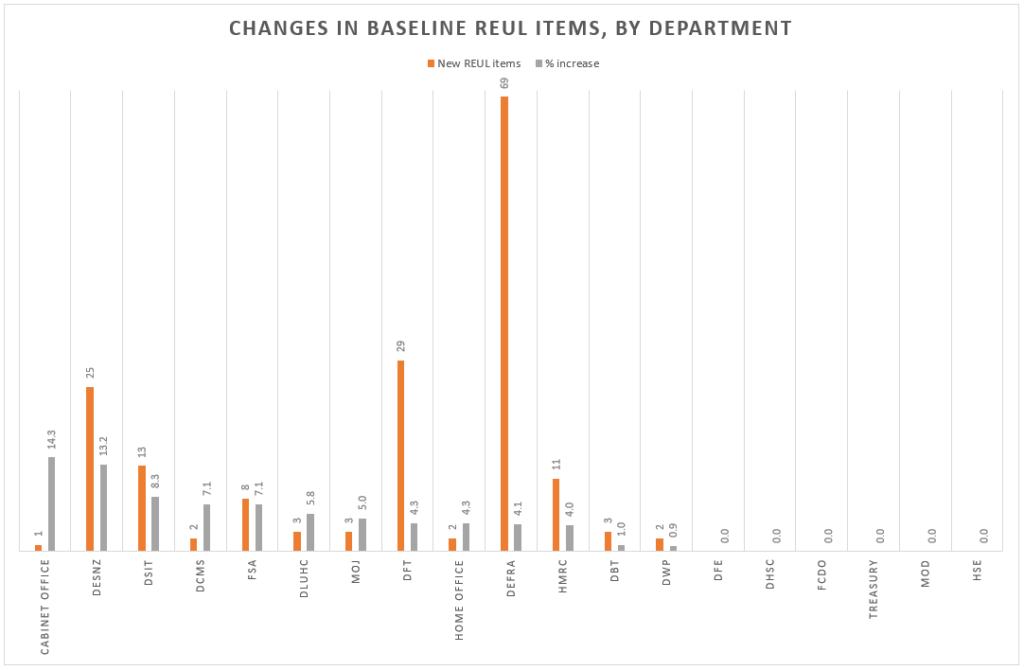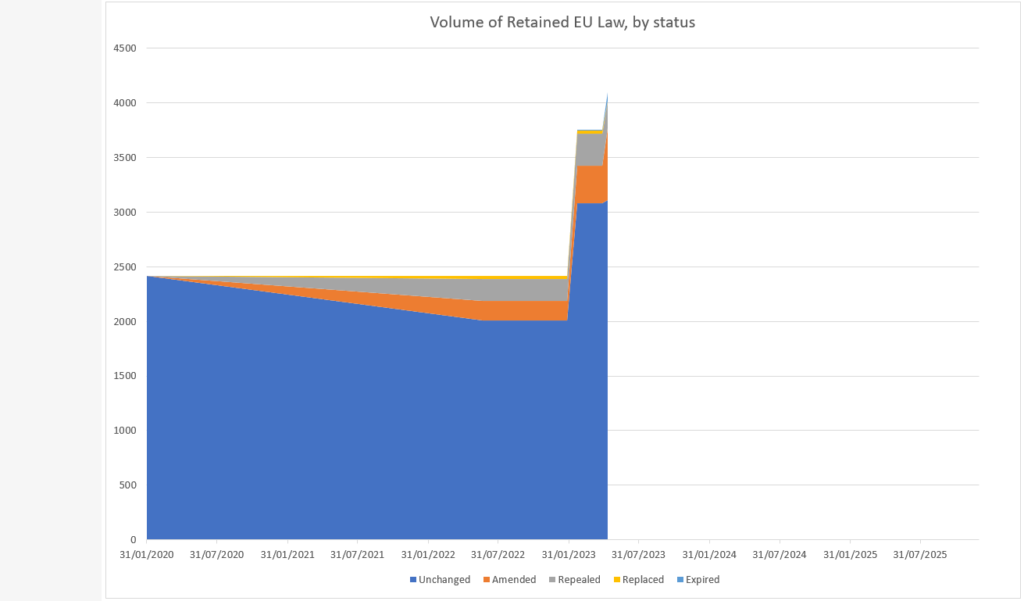A few months ago, the government updated its retained EU law (REUL) dashboard, its go-to place for monitoring progress in moving away from this foreign imposition on the UK.
As I noted at the time, this wasn’t entirely satisfactory, either in terms of the new discoveries of EU law or the progress towards the nomination deadline of the REUL Bill, wherein anything not explicitly dealt with otherwise by the end of 2023 would be revoked/sunset/sunsat/sunsetted.
It’s been clear from the off that the Bill is a nonsense, given that the government doesn’t know what is on the books and that departments evidently don’t have the capacity to check the impact of revocation.
That the government has finally conceded this point with the decision last week to move an amendment to make revocation an exception rather than a rule is welcome, even if it doesn’t address the other deficiencies of the Bill.
The intention now is that the government will seek to revoke a specified list of REUL by the deadline, with everything else being left for later/kept on the books (depending on how you want to see it).
That list finally came out this week.
Having produced a tracker of progress on REUL since last summer, it felt incumbent that I check out what was on this list and its impact on revocation.
On a first analysis, problems rather leapt out:
https://twitter.com/Usherwood/status/1658487530160001025?s=20
The problems are two-fold.
First up, the schedule includes a lot of items that weren’t previously listed on the dashboard: 171 of the 587 items, or 29% have no obvious match to what was available with last week’s update of the dashboard.
While many of these new items were relatively mundane and inconsequential, the fact that after two major revisions to the list there were still so many items that hadn’t been noted before just underlines the fundamental problem behind the REUL Bill: it’s hard to have confidence in the automatic revocation/sunsetting process when you keep on discovering new items that this affects.

This new discovery falls across a lot of departments in Whitehall, especially in DEFRA, DfT and DESNZ. The outlier is Treasury, mainly because their REUL is parked in a separate process under a new financial services bill.
However, for everyone the impression is that there’s ever more REUL than before (and these graphs are without the new items from the schedule):
record

Which leads to the second issue: record-keeping.
In the course of checking through the schedule it became apparent that there is neither a consistent identification protocol for REUL items nor a check on duplication.
to take two examples from the Excel spreadsheet behind the dashboard, Council Decision 2010/763/EU and Regulation 906/2009 both appear twice. Even if that doesn’t carry through to the dashboard itself, it raises questions about how far there is full oversight of the process in central government bodies.
Overall, while the government’s move on the REUL Bill is welcome it still leaves a number of basic questions unanswered on how practical or viable the process intended might be. The shift to retention until otherwise decided makes even more sense that it already did, but this should not obscure the difficulties involved or the potential for unintended consequences.
